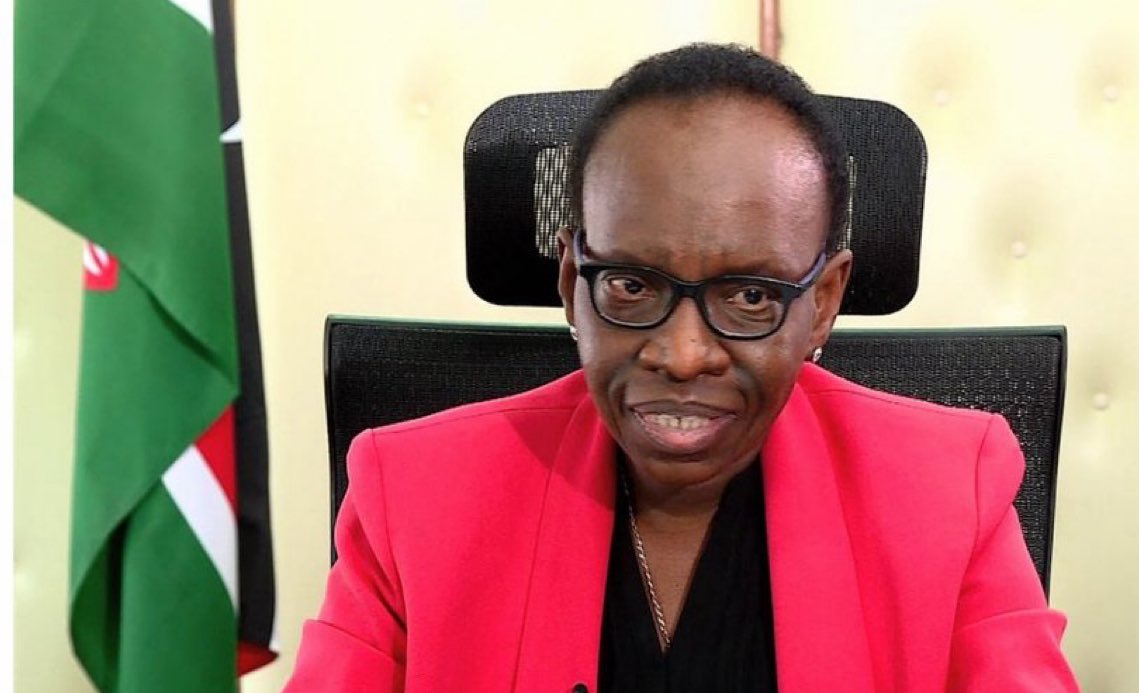Investigations
Auditor Flags Sh6.17 Billion Spent on Dead Stadiums

Gathungu report exposes massive waste as six major sports facilities remain incomplete years after construction began
Kenya’s dream of world-class sporting infrastructure has turned into a nightmare of stalled projects and vanished contractors, with the latest audit report revealing that Sh6.17 billion has been sunk into six stadiums that remain incomplete—some abandoned for over seven years.
Auditor General Nancy Gathungu’s damning report paints a picture of systematic failures, disappeared contractors, and projects that have become monuments to poor planning and execution. The six facilities—Kamariny, Kipchoge Keino, Karatu, Wote, Ruring’u, and Kirubia stadiums—represent not just financial loss but missed opportunities for Kenya’s sporting development.
Perhaps most shocking is the case of Kamariny Stadium in Elgeyo Marakwet, where a contractor simply vanished after pocketing Sh87.1 million—30 percent of the Sh287.8 million contract. The 15,000-seater facility, which was supposed to include eight-lane tracks and field events facilities, has been a ghost site since 2017.
The Kipchoge Keino Stadium saga reads like a masterclass in project mismanagement. Despite contract revisions that pushed costs from Sh304.2 million to Sh369.69 million, the first phase remains incomplete as termination processes began to accommodate AFCON requirements. The second phase, costing Sh325.82 million, saw the contractor abandon the site after receiving 80 percent of payments due to delayed compensation.
At Karatu Stadium, shoddy workmanship tells its own story. Despite paying the contractor Sh217.1 million—83.6 percent of the contract value—audit inspections revealed honeycombed concrete columns, improper mixing ratios that have weakened structural beams, and a perimeter wall that has caved in. The 1,500-seater pavilion remains unfinished, and the promised borehole was never dug.
The Wote Stadium project exemplifies the chaos that can ensue when proper planning is abandoned. Makueni County’s decision to change the construction site mid-project created a domino effect of additional costs and complications. Without conducting a feasibility study for the new location, the contractor faced unexpected challenges in land compaction and leveling. Adding insult to injury, site materials were stolen, further hampering progress despite Sh196.48 million in payments.
Ruring’u Stadium in Nyeri presents perhaps the most brazen case of project abandonment. Seven years after construction began in January 2017, the contractor has disappeared from the site entirely. The original completion date of August 5, 2017, has become a cruel joke as the project remains incomplete despite contract sum revisions that inflated costs by 24.4 percent to Sh358.2 million. The contractor has already been paid Sh302 million.
Even Kirubia Stadium, officially listed as “complete” with Sh274.2 million paid out, fails to meet standards. The March 2024 audit revealed multiple anomalies that management has failed to address, and questions remain about land ownership documentation.
These failures extend beyond mere financial loss. They represent a betrayal of Kenya’s sporting ambitions and the communities that were promised world-class facilities. Young athletes who could have been training in these venues have been denied opportunities, while the international sporting events these stadiums were meant to host have gone elsewhere.
The audit findings also raise serious questions about oversight mechanisms within Sports Kenya and county governments. How do contractors disappear with millions in public funds? Why are projects approved without proper feasibility studies? What accountability measures exist when public officials fail to deliver on their promises?
As Kenya continues to position itself as a sporting powerhouse, these stalled projects serve as a sobering reminder that infrastructure development requires more than just financial allocation—it demands rigorous planning, consistent oversight, and unwavering commitment to completion.
The Sh6.17 billion spent on these dead stadiums could have built functional sporting facilities across the country. Instead, it has created a landscape of abandoned dreams and concrete shells that stand as monuments to institutional failure.
Taxpayers deserve answers. More importantly, they deserve stadiums that actually exist.
Kenya Insights allows guest blogging, if you want to be published on Kenya’s most authoritative and accurate blog, have an expose, news TIPS, story angles, human interest stories, drop us an email on [email protected] or via Telegram
-

 Business4 days ago
Business4 days agoKakuzi Investors Face Massive Loss as Land Commission Drops Bombshell Order to Surrender Quarter of Productive Estate
-

 Investigations5 days ago
Investigations5 days agoINSIDER LEAK REVEALS ROT AT KWS TOP EXECUTIVES
-

 Investigations2 weeks ago
Investigations2 weeks agoPeter Agoro Legal Battles Reveal How EACC Framed a Whistleblower to Protect Corrupt Elites
-

 Investigations2 days ago
Investigations2 days agoCNN Reveals Massive Killings, Secret Graves In Tanzania and Coverup By the Govt
-

 Politics2 weeks ago
Politics2 weeks agoRuto Set to Dominate ODM@20 in Mombasa, Positioning Himself as Raila Odinga’s Political Heir Ahead of 2027
-

 News5 days ago
News5 days agoEXPOSED: How Tycoon Munga, State Officials, Chinese Firm Stalled A Sh3.9 Trillion Coal Treasure In Kitui
-

 Business4 days ago
Business4 days agoBANKS BETRAYAL: How Equity Bank Allegedly Helped Thieves Loot Sh10 Million From Family’s Savings in Lightning Fast Court Scam
-

 News5 days ago
News5 days agoEx-Boyfriend Withdraws Explosive Petition to Remove DPP After Criminal Case Against Capital FM Boss Resurfaces




























